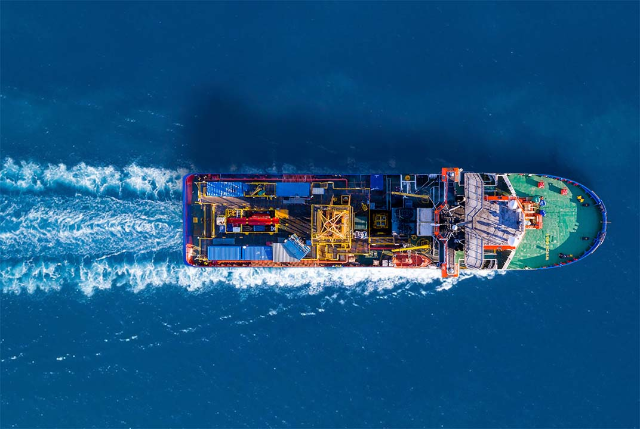
Inmarsat Maritime launches Fleet Reach coastal LTE service
Inmarsat Maritime, a Viasat business, has announced its new Fleet Reach coastal LTE service for maritime connectivity, which brings uninterrupted high-speed broadband to merchant, offshore, energy and fishing customers – even when they are sailing near the coast or are docked in-port. Inmarsat Maritime Fleet Reach coastal LTE
Traditionally, coastlines and ports are congested connectivity hotspots. With a high number of people and vessels accessing networks at the same time, connections are not always reliable. This is a regular headache for seafarers around the world, with the average vessel spending up to 40% of its time in ports or in coastal areas.
Inmarsat Maritime’s Fleet Reach – optimised by Fleet Xpress – offers supercharged coastal connectivity thanks to added terrestrial mobile connectivity. This enables faster speeds, increased signal strength, lower latency and more reliable connectivity when sailing near coasts or docked in-port. This means that seafarers can enjoy consistent connectivity wherever the vessel is, with the service seamlessly switching between technologies to ensure an always-on connection.
Demand for connectivity services is currently soaring
Connectivity has a huge impact on operations at sea, where the need to safely collect and distribute data is vital to get the most out of modern systems, especially with the increasing number of sensors and applications onboard ships. It is also vital for crew welfare, helping those onboard keep in touch with family and friends at home, or stay entertained by streaming and gaming. A recent Inmarsat study found demand for these services is currently soaring: with an annual increase of 131% for business applications and a staggering 149% for crew applications.
Fleet Reach also comes with security credentials that far outweigh the existing method of using dongles for connectivity when in-port. This means customers can maintain security standards and policies company-wide, without increased risk of cybersecurity threats. Inmarsat Maritime Fleet Reach coastal LTE
The new service forms part of Inmarsat ORCHESTRA, the satellite company’s “network of networks” which uses multiple technologies in multiple orbits to deliver connectivity wherever and whenever it is needed. Fleet Reach constantly monitors signal quality and selects the right technology for the best connection as and when required, drawing on mobile terrestrial technologies as well as satellite connectivity to deliver uninterrupted broadband connectivity.
Ben Palmer, President, Inmarsat Maritime, said “We know the enormous impact that seamless connectivity at sea has for seafarers – both on productivity and crew welfare – especially with so much time being spent in-port. Our new Fleet Reach service – the latest update to our Fleet Xpress solution – is a major step forward, enabling uninterrupted connectivity from sea, to shoreline, to port, and back again, wherever and whenever it is needed.
“The power of Inmarsat’s multi-technology, multi-orbit ORCHESTRA platform is the backbone behind this seismic change in coastal connectivity, taking advantage of our world-class GX constellation as well as terrestrial technologies. Five more Global Xpress satellite payloads and the three recently announced Inmarsat-8 L-band satellites are set to enter service over the coming years to bolster this connectivity and the certainty it brings even further. We look forward to seeing the maritime sector reap the rewards of this consistent, reliable connectivity.”
Fleet Reach is available on regional plans for vessels operating in one region, or multi-regional plans for those sailing around the world. It is powered by Inmarsat’s Fleet Xpress, a uniquely flexible solution using the world’s most advanced satellite constellation to deliver a best-in-class connectivity experience to the crew. Fleet Xpress operates as a fully managed service, powered by Inmarsat’s Ka-band Global Xpress network, enabling customers to increase their bandwidth as their digital ecosystem evolves.









